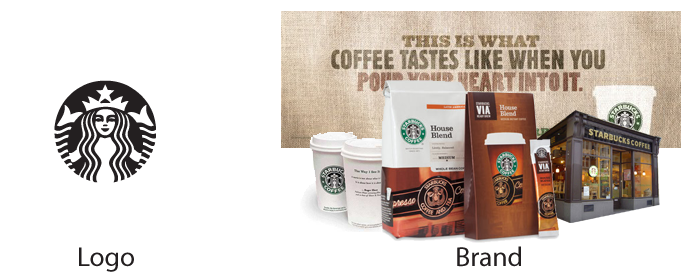Brand Development: The Differences Between a Logo and Brand

There are two of the main differences between a comprehensive branding and a logo and they are SCOPE and CONTEXT.
While a logo or identifying mark is an integral part of any branding campaign, a logo by itself is kind of like an ice cream cone without any ice cream. The shell works, it has function and usefulness, but without anything to put it in the context of usability, the ice cream, it’s potential is never fully realized and therefore its effectiveness as a cone is greatly diminished.
Very similarly, a logo can be good by itself, some are even great, but without developing a brand: a culture and context for that logo to live in (the sweet stuff that makes everything work together harmoniously), the efficacy of the effort is diminished.
SCOPE
The scope of a mark is finite and all encompassing at the same time. It is the lodestone of any organization; it can provide inspiration for the direction of a company and act as a unifying identity for the members of the organization. Yet it is still only a single element that goes into the overall success of the brand development of an organization.
A logo or mark (a visually impactful encapsulation of a company and its culture), establishes a foundation for the rest of the brand development to be built on. From there, the focus must be on establishing the parameters in which the logo will exist and the supportive context that will bring the logo to life. Otherwise the full usefulness of a logo will never have the opportunity to be seen.
CONTEXT
The How and the Who?
Establishing Brand and Usage Guidelines is the how. It is the first step in establishing the context of a logo or identity is creates the rules that govern the use and application of a logo or identity. The How governs how the logo/mark will be displayed, treated and used throughout its lifespan.
Internally, this ensures that whoever comes in contact with the logo has guidelines that keep the application and display of an identity consistent across platforms (online, digital media, mobile applications, full color printing, spot color printing, news printing, etc.).
Externally, users, viewers, customers, target markets and clients receive a uniform and consistent representation of the organization.
The Who is where context really gets established. The Who is the marketing, advertising, package design, product design, collateral design, interactive design, initiatives, etc. that all come together and show the world what it is the logo represents.
Once the Scope, Context, How and Who have all been established, all the elements of a brand development have been brought to life, bob’s your uncle, and then the focus can turn to the business…of business…what ever that may be.